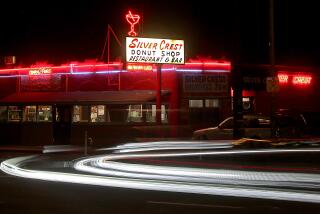Anarchism, with whipped cream and a cherry on top
Labor historian Erik Loomis has unearthed a fascinating historical nugget hiding in plain sight: the famous anarchist Emma Goldman once owned an ice cream shop in Worcester, Mass.
Loomis, of the University of Rhode Island, doesn’t say what prompted him to delve into Goldman’s discursive and revealing 1931 autobiography, “Living My Life,” where he discovered the detail about the shop she opened with her compatriot and lover, Alexander (“Sasha”) Berkman. But it’s a reminder that even radicals sometimes have to make compromises with capitalism to make ends meet.
Goldman, who was born in present-day Lithuania, was one of the most eminent radicals of her time. A stemwinding speaker, she was repeatedly imprisoned for activist positions including fighting for birth control and against the 1917 draft. Eventually U.S. authorities deported her back to Russia, where her support of the Bolshevik revolution evaporated in the wake of the brutal suppression of the 1921 Kronstadt rebellion. She died in Toronto in 1940.
As Goldman describes her foray into petty capitalism, sometime around 1891 or 1892 she and Berkman were seized by “the old yearning” to return to their Russian homeland to battle the atrocities of the Tsarist regime.
“But where to get enough money for the purpose?...It occurred to us that an ice-cream parlour might prove the means to our end.” They put up $50 of their own, borrowed $150 from their landlord, rented a storefront, and “succeeded in turning the neglected ramshackle place into an attractive lunch-room....Within a short time we had paid back our landlord’s loan and were able to invest in a soda-water fountain and some lovely coloured dishes.”
As historians know, events went downhill from there. One day, spotting a newspaper headline over a customer’s shoulder, Goldman saw news of the Homestead steel strike, which was being countered by violence from Pinkerton agents and the Pennsylvania state militia.
She paid for the man’s paper with a free dish of ice cream (true story), then closed the store and plotted with Berkman to assassinate the steel company boss, Henry Clay Frick. Berkman eventually gained access to Frick’s office, where he shot and stabbed the man but failed to kill him. Loomis’s gloss, which is pretty much inarguable: “The fact that Berkman couldn’t off a bloated Gilded Age capitalist while armed with a gun and a knife is proof that you can’t trust anarchists to do anything right.”
Loomis puts a cherry atop the Goldman story by pointing us toward a charming 1954 essay by the comic playwright and New Yorker writer S.N. Behrman, who tells of his childhood in Worcester visiting the ice cream shop, where he could get two scoops for the price of one. Toward the end of the piece, Behrman delivers the punchline, which is his discovery that the story, “which all my life I had devoutly believed,” couldn’t be true because Goldman closed the shop in 1892 and he wasn’t born until 1893. So does memory play tricks on us all.
Keep up to date with the Economy Hub. Follow @hiltzikm on Twitter, see our Facebook page, or email mhiltzik@latimes.com.







